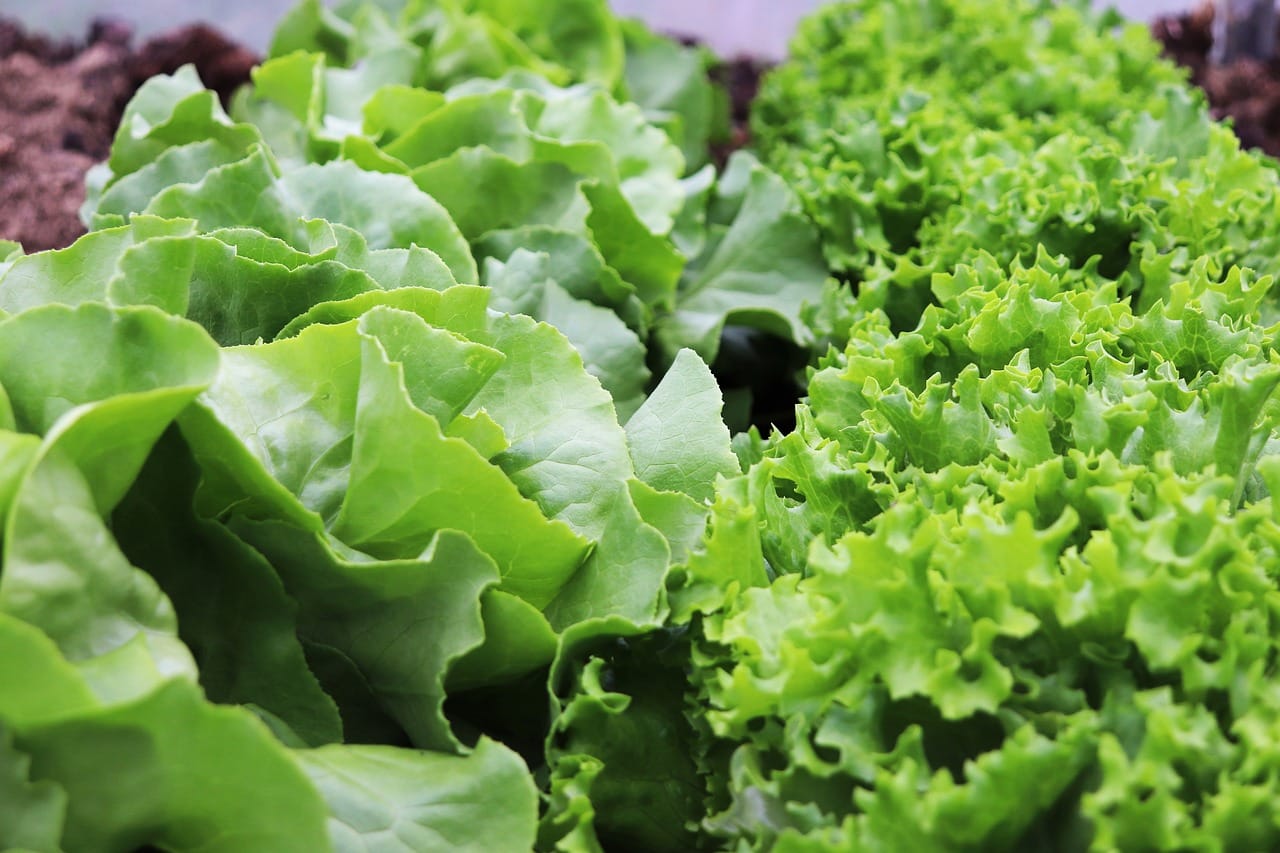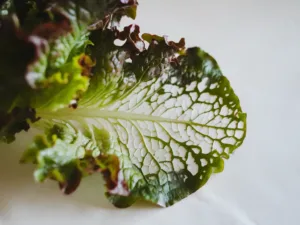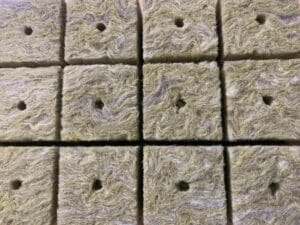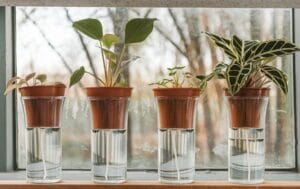Lettuce is a fast-growing plant that is relatively simple to cultivate in hydroponics, but it does have some specific requirements.
Since lettuce forms shallow roots, it’s important to choose a system that provides consistent but not excessive moisture. Lettuce plants are compact and don’t require much space, but they are sensitive to temperature and light fluctuations.
A hydroponic system should therefore ensure stable temperatures and sufficient light to guarantee uniform growth. Lettuce prefers cooler growing conditions, which should be considered in hydroponics to achieve optimal yields.
Which Lettuce Varieties Thrive in Hydroponics?
Lettuce is one of the easiest plants for hydroponics and offers a variety of types that differ in leaf structure and flavor. Depending on whether you want tender leaves for fresh salads or more robust varieties for longer shelf life, you should choose the appropriate type.
Tender Lettuce Varieties
These varieties are known for their soft, tender leaves that grow quickly and are perfect for fresh salads:
- ‘Butterhead‘ – Soft, tender leaves, mild in flavor.
- ‘Lollo Rosso‘ – Decorative, red leaves, tender and light.
- ‘Bibb‘ – Tender structure, ideal for sandwiches and salads.
- ‘Little Gem‘ – Mini-Romaine, tender leaves, compact growth.
- ‘Oakleaf‘ – Leaves resemble oak leaves, very tender and delicate.
Robust Lettuce Varieties
- ‘Romaine‘ – Strong, upright-growing leaves, long-lasting.
- ‘Iceberg‘ – Crisp, firm leaves, ideal for wraps and burgers.
- ‘Batavia‘ – Robust structure, slightly sweet taste.
- ‘Crispino‘ – Very resilient, stays fresh for a long time.
- ‘Winter Density‘ – Especially suited for growing in cooler conditions, robust and productive.
Tender varieties are ideal if you prefer quick, fresh harvests, while robust varieties are longer-lasting and suitable for a variety of dishes.
The Ideal Hydroponic System for Crunchy Lettuce
Lettuce is the easy-going all-rounder of hydroponics – a plant that thrives in almost any system. With its low nutrient requirements and fast growth, lettuce is perfect for hydroponics. Here are the best systems for your lettuce cultivation:
NFT System
The NFT system is almost ideal for lettuce as it continuously provides nutrients and ensures good oxygen supply. In our NFT system, lettuce grows like a charm – always crisp and fresh. NFT is like a smart irrigation system – it takes care of everything while your lettuce thrives.
Deep Water Culture (DWC)
Deep Water Culture is also well-suited for lettuce, as long as there is adequate root aeration. With DWC, we grew lettuce with minimal effort – simple and effective. DWC is the “no-fuss” approach for lettuce – low effort, great results.
No matter which system you choose, lettuce will always be a winner in hydroponics. With NFT or Deep Water Culture, you can be sure your lettuce will grow crisp and healthy.
Step-by-Step Guide: How to Grow Lettuce Hydroponically
Now, let’s get down to business. How do you bring these little seeds to life? Lettuce is a natural talent when it comes to cultivation. Start with high-quality seeds and choose a growing medium like rock wool or coconut fibers. These media hold moisture and air optimally, so your seedlings don’t drown or dry out. It’s a real balancing act!
Place your seeds in a warm, bright spot – around 18-22°C is ideal. You’ll see the first green sprouts in just a few days. When the seedlings have two to four true leaves, it’s time to move them to the hydroponic system. Make sure the roots aren’t damaged – these little heroes will thank you!
The Right Substrate for Healthy Hydroponic Lettuce
No success without a good foundation! This also applies to your hydroponic lettuce. But what replaces soil? Don’t worry, there are some excellent alternatives:
- Rock Wool: The classic in hydroponics. It’s lightweight, provides good aeration, and holds moisture just right. Lettuce loves to settle in rock wool and spread its roots.
- Coconut Fibers: Looking for a more eco-friendly option? Coconut fibers are the right choice. They store water and air, ensuring balanced supply for your plants.
- Perlite: These white pellets are lightweight and help improve drainage. They’re often ideal in combination with other substrates to create the perfect growth environment.
The choice of the right substrate depends on your system and your goals. But one thing is certain: your lettuce will thank you!
Optimal Temperatures for Growing Hydroponic Lettuce
Lettuce has a simple wish: “Keep me cool!” Temperatures between 15 and 21°C are ideal for lettuce. If it gets too hot, it may start to bolt – and we want to avoid that. A simple fan or a slightly open window can work wonders here. A cooler basement room can also be an ideal place for your hydroponic setup. If you keep the temperature under control, nothing stands in the way of your lettuce’s healthy growth!
Perfect Lighting for Lettuce Growth in Hydroponics
Light is the lifeblood of every plant, and your lettuce is no exception! It needs around 12-16 hours of light per day to grow strong and healthy. LEDs are the best choice as they are energy-efficient and easy to handle. Remember: not too close to the plants to avoid burns – about 30 cm distance is ideal. Your lettuce will “jump for joy” when it gets the right light.
pH and EC Values: How to Regulate Nutrients for Hydroponic Lettuce
In hydroponics, it’s all about balance – especially when it comes to pH and EC values. A pH of 5.5 to 6.5 is the “sweet spot” for lettuce. Why? Because it can best absorb nutrients at this range. Use simple pH meters to keep track, and use pH-up or pH-down solutions if you need to adjust. The EC value – the measure of nutrient concentration – should be between 1.2 and 1.8 mS/cm. A little tip: do weekly checks, and your lettuce will stay healthy and happy!
Hydroponic Fertilizers for Lettuce: What You Need to Know
Your lettuce needs food – and the right kind! Hydroponic fertilizers are specifically designed to nourish plants without soil. You can find them in liquid or solid form, each packed with all essential nutrients. In the first weeks of growth, a higher nitrogen content is beneficial to promote leaf growth. Then switch to a balanced mix to refine the flavor. Avoid over-fertilizing – less is sometimes more!
When and How to Harvest Hydroponic Lettuce Properly
And now comes the exciting part: the harvest! After about 4-6 weeks, you can enjoy your lettuce. Either harvest it completely or just cut the outer leaves to let the rest keep growing. This is called the “cut-and-come-again” method – a great way to have continuous fresh leaves. Use a sharp knife to avoid damaging the plant. A little tip: harvest in the morning when the leaves are freshest!
Fighting Common Diseases and Pests in Hydroponic Lettuce
Even in the best garden, there are occasional unwanted visitors. In hydroponics, these are often pests like aphids or spider mites. Don’t panic! A few drops of neem oil or beneficial insects like ladybugs can quickly solve the problem. Another common issue is root rot – usually caused by too much moisture or poor aeration. Keep an eye on the roots and ensure good ventilation. Prevention is the best strategy!
Tips for Sweeter and Crunchier Lettuce from Your Hydroponic System
Want to elevate the taste of your lettuce to the next level? Here are some pro tips: Reduce the light to 10 hours per day in the last two weeks before harvest – this enhances the sweetness of the leaves. Ensure the EC value of the nutrient solution is slightly lower during this phase. This prevents the leaves from becoming bitter. Your taste buds will thank you!
Hydroponic Lettuce Cultivation: Achieving the Perfect Harvest
Hydroponic lettuce cultivation is not only effective but also incredibly fun. With the right tips and a bit of patience, you can harvest fresh, healthy lettuce all year round. So, grab your equipment, choose your favorite varieties, and let your lettuce garden bloom in full glory. There’s nothing better than enjoying the fruits – or rather, the leaves – of your own labor!







